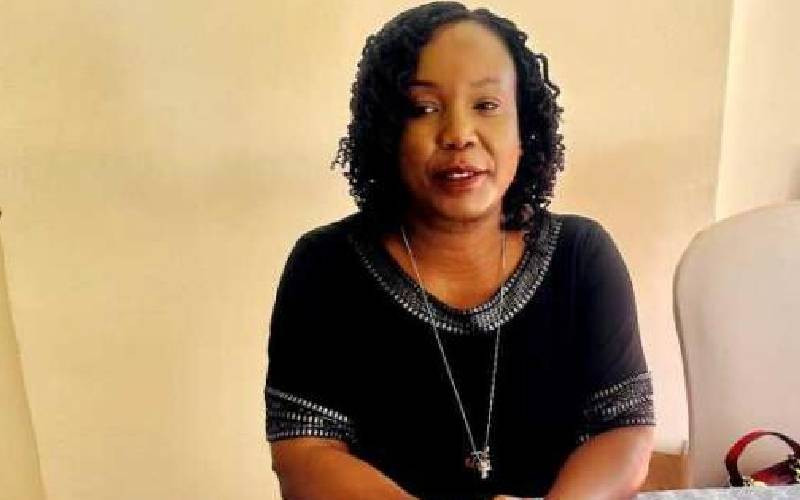By Ferdinand Mwongela
The upsurge in real estate has resulted in booming business for property developers, majority of whom prefer to construct houses for the high-income group.
Financial institutions are the biggest beneficiaries of the property boom being experienced in the country.
Where once mortgage provision was restricted to a few specialised institutions like Housing Finance, East Africa Building Society, Savings and Loans (S&L) and National Housing Corporation, today the market is flooded with commercial banks fighting to profit from the real estate sector.
Over the recent past, banks have launched and boldly rolled out their ‘competitive’ mortgage packages targeted at prospective clients desiring to buy or build houses, estates and commercial complexes.
It helped that the Government changed its regulations to enable banks lend long-term.
This move allowed banks such as Barclays, Standard Chartered, Co-operative and Gulf Bank among others to roll out products (including Shariah-compliant products targeting Muslims) that are essentially similar (with minor differences) in terms of requirements demanded and interest rates charged.
 |
A house in Nairobi. High interest rates offered by banks and their terms of lending confine mortgage provision largely to the well-off.
|
To boost its market share and reposition itself in the market, S&L merged with Kenya Commercial Bank (KCB).
According to S&L Managing Director Caroline Kariuki and KCB Chief Executive Officer Martin Oduor Otieno, the merger will enable the institutions lend more. S&L’s lending was previously capped at Sh250 million.
"Following the merger, S&L can now lend much more with KCB," says Kariuki. At the launch of Co-operative Bank’s Good Home Mortgage facility last year, the head of Mortgage Finance, Chris Chege, said the market showed a lot of promise as the number of people willing to take mortgages was on the rise.
Lots of promise
According to him, only 25 per cent of funds that went into the construction industry last year came from structured institutions. Banks, on the other hand, provided Sh27 billion.
However, Kenya faces a shortage of about 450,000 houses annually despite the growing mortgage lending. Sadly, the high interest rates offered by banks and their terms of lending confine mortgage provision largely to the well off in society.
A human resource survey by audit firm PricewaterhouseCoopers (PwC) indicates that Kenya’s top CEOs take home a cool Sh3.9 million a month while minimum wage averages at Sh2,000.
The minimum mortgage lending in most financial institutions is pegged at Sh500,000. Repayment at 13.5 per cent (the lowest rate in the market) amounts to Sh5,828 per month for 25 years. To build a good house, one would have to be in possession of at least Sh2 million. Construction of a very basic house would cost around Sh1 million.
Repayment for these loans would average at Sh13,725 and Sh12,073 respectively for 20 years at 13.5 per cent interest.
Evidently, majority of Kenyans, who fall in the low-income group and earn less than Sh10,000 cannot afford to take out a mortgage, a facility that, ideally, should help them own houses.
Tysons’ Marketing Manager Isaac Maira predicts that prices for the middle-income segment where most of the demand lies will continue to go up.
In Nairobi, a decent three-bedroom house or apartment sells for about Sh5 million or more. In upmarket areas, a similar unit would cost Sh12 million or even more depending on the location.
The middle-income group, whose gross earnings range from Sh30,000 to Sh180,000 would perhaps be able to afford such homes if they had additional income to boost payments. For instance, at an interest rate of 13.5 per cent, a Sh5 million mortgage would require one to make monthly repayments of Sh60,369 for 20 years, Sh76,137 for 10 years or Sh115,049 for five years.
At 15 per cent, monthly repayments for the same house would be Sh68,626.50, Sh72,565.50 and Sh82,205.50 for 20, 15 and 10 years respectively.
Paradox
From the PwC survey, the highest paid employee in the non-management cadre in the hotels and hospitality industry is a headwaiter earning Sh56,621 while the lowest, a room steward, earns Sh15,355 per month. Many Kenyan workers lie between this income bracket.
This effectively means that purchasing a Sh5 million house, which developers love to coin as ‘middle-income housing’ is out of their scope.
Even well-paid personnel whose monthly gross earnings average Sh150,000 would be hard pressed to purchase such a house when their net income averages Sh85,000.
Paradoxically, property prices continue to soar putting house ownership more beyond the reach of many.
Antone Wambura, the head of credit and risk management at First Community Bank — a Shariah-guided institution — says lending is tied to the borrowers’ ability to repay.
In the case of a commercial project, future earnings are taken into consideration before the developer can secure a loan.
Martin Gitonga, an employee with a local company, contends it makes little sense for first-time homeowners to take a mortgage due to the high repayment rates.
Prefer to rent
"You cannot rely on a salary to make the repayments over a long period," he says.
Thus, many middle-income Kenyans prefer to rent houses while informal settlements continue to grow to accommodate the low-income group.
 The Standard Group Plc is a multi-media organization with investments in media
platforms spanning newspaper print operations, television, radio broadcasting,
digital and online services. The Standard Group is recognized as a leading
multi-media house in Kenya with a key influence in matters of national and
international interest.
The Standard Group Plc is a multi-media organization with investments in media
platforms spanning newspaper print operations, television, radio broadcasting,
digital and online services. The Standard Group is recognized as a leading
multi-media house in Kenya with a key influence in matters of national and
international interest.
 The Standard Group Plc is a multi-media organization with investments in media
platforms spanning newspaper print operations, television, radio broadcasting,
digital and online services. The Standard Group is recognized as a leading
multi-media house in Kenya with a key influence in matters of national and
international interest.
The Standard Group Plc is a multi-media organization with investments in media
platforms spanning newspaper print operations, television, radio broadcasting,
digital and online services. The Standard Group is recognized as a leading
multi-media house in Kenya with a key influence in matters of national and
international interest.










